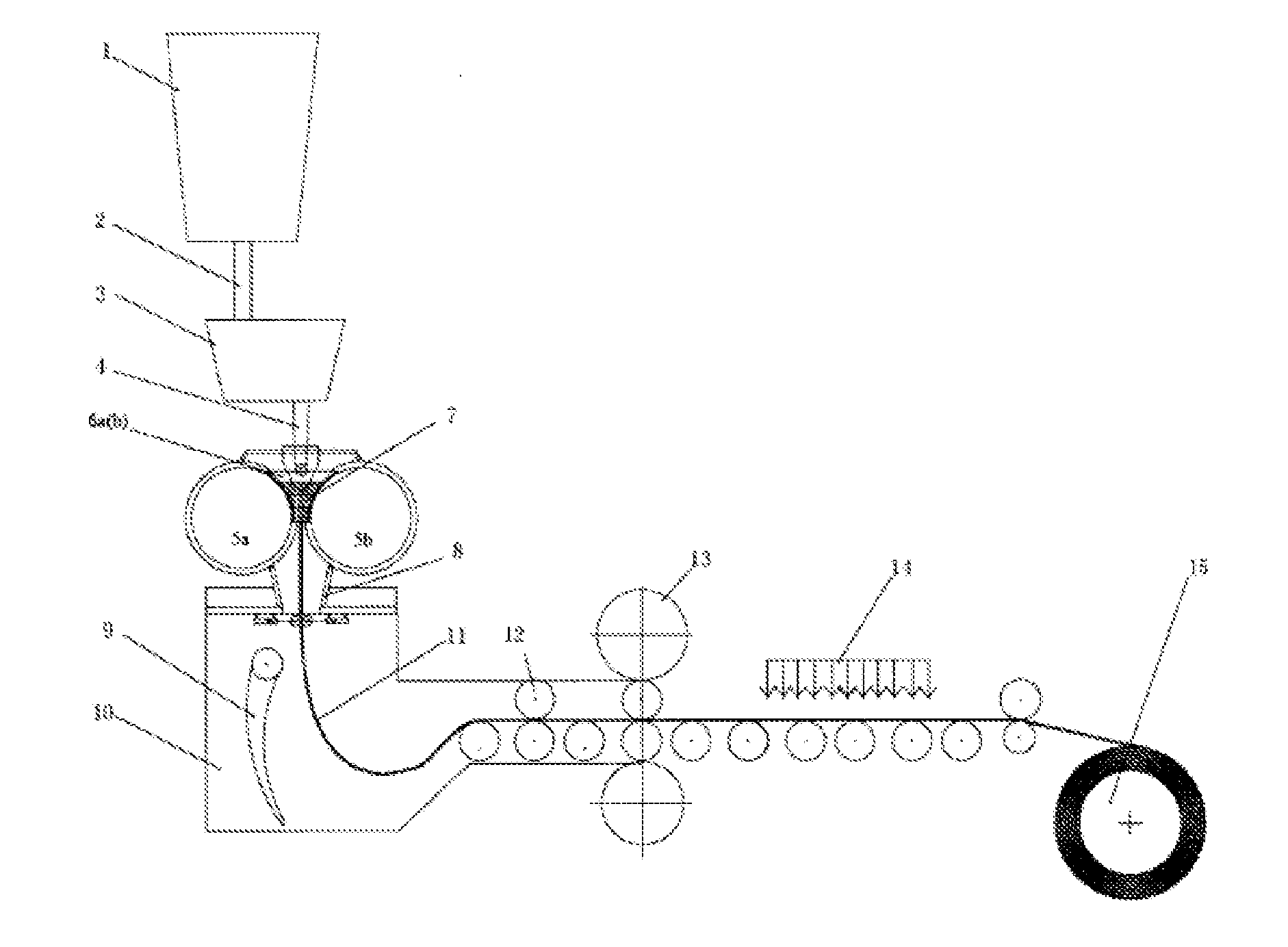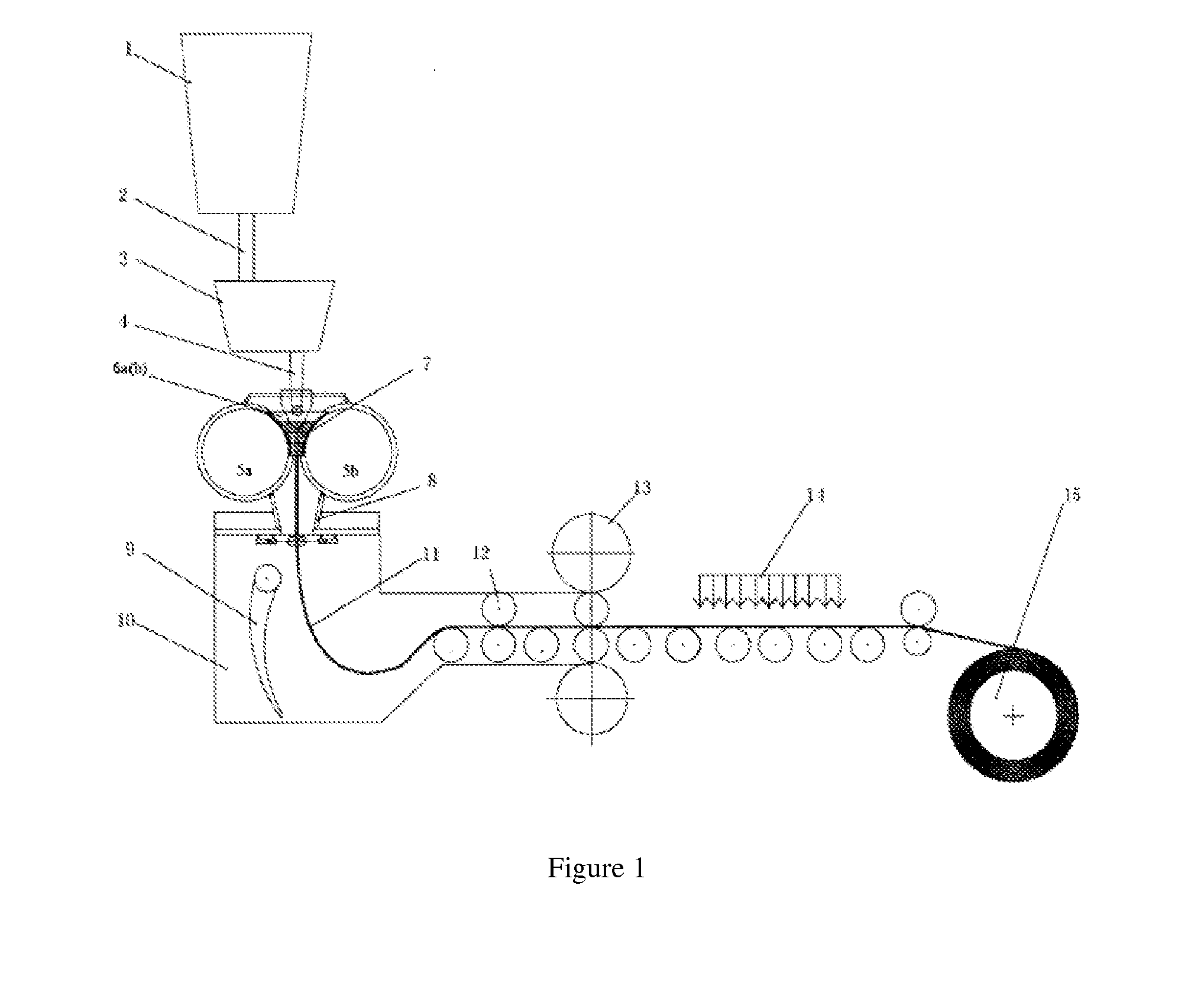Manufacturing Method for Strip Casting 700 MPa-Grade High Strength Atmospheric Corrosion-Resistant Steel
a manufacturing method and atmospheric corrosion resistance technology, applied in the field of continuous strip casting process, to achieve the effect of improving the homogeneity of size, high strength and elongation
- Summary
- Abstract
- Description
- Claims
- Application Information
AI Technical Summary
Benefits of technology
Problems solved by technology
Method used
Image
Examples
Embodiment Construction
[0098]Referring to FIG. 1, the continuous strip casting process flow of the present invention is described below: The molten steel in the large steel ladle 1 is introduced through the long nozzle 2, tundish 3 and submersed nozzle 4 to the molten pool 7 formed by a pair of relatively rotating and internally water-cooling casting rollers (5a and 5b) and the side dams (6a and 6b), and forms the cast strip 11 1˜5 mm in size through cooling by the water-cooling casting rollers; the steel strip then goes through the secondary cooling device 8 in the airtight chamber 10 to control its cooling rate, and is then delivered to the hot rolling mill 13 through the swinging guide plate 9 and pinch roller 12; the hot-rolled strip 0.5˜3 mm in size formed after hot rolling then goes through the third cooling device 14, and then goes into the coiling machine 15. The steel coil is then taken down from the coiling machine for natural cooling to room temperature.
[0099]In all the examples of the present ...
PUM
| Property | Measurement | Unit |
|---|---|---|
| thickness | aaaaa | aaaaa |
| thickness | aaaaa | aaaaa |
| thickness | aaaaa | aaaaa |
Abstract
Description
Claims
Application Information
 Login to View More
Login to View More - R&D
- Intellectual Property
- Life Sciences
- Materials
- Tech Scout
- Unparalleled Data Quality
- Higher Quality Content
- 60% Fewer Hallucinations
Browse by: Latest US Patents, China's latest patents, Technical Efficacy Thesaurus, Application Domain, Technology Topic, Popular Technical Reports.
© 2025 PatSnap. All rights reserved.Legal|Privacy policy|Modern Slavery Act Transparency Statement|Sitemap|About US| Contact US: help@patsnap.com


